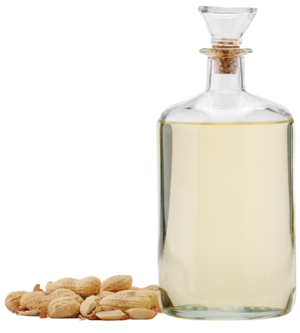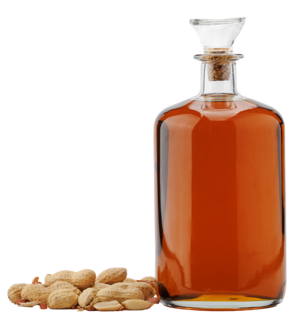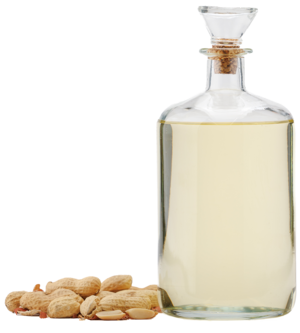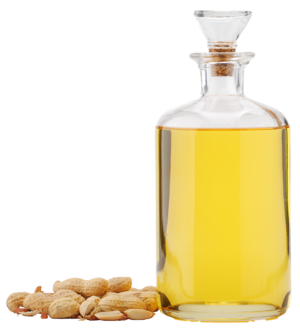Our Peanut oil qualities
We carry Peanut oil in the following qualities for you
Usage
|
Cosmetics |
Food |
Pharmaceutics |
|
|---|---|---|---|
| Peanut oil refined Ph. Eur. | |||
| Peanut oil cold pressed | |||
| Peanut oil pressed toasted | |||
| Organic peanut oil refined Ph. Eur. | |||
| Organic peanut oil cold pressed |
|
Cosmetics |
Food |
Pharmaceutics |
|
|---|---|---|---|
| Peanut oil refined Ph. Eur. | |||
| Peanut oil cold pressed | |||
| Peanut oil pressed toasted | |||
| Organic peanut oil refined Ph. Eur. | |||
| Organic peanut oil cold pressed |

Peanut plant & peanut
Peanut oil is obtained from the shelled seeds of Arachis hypogaea L. Like beans and peas, peanuts belong to the legume family (Fabaceae or Leguminosae). The name "peanut", which means "pea-nut", also indicates this relationship. The peanut is a subfamily of the papilionaceous plants (Faboideae). Since its fruits ripen in the earth, in contrast to those of the other papilionaceous plants, do not open but remain closed, the fruits are simply called nuts in common parlance. In contrast to most other legumes, peanuts are edible raw.
The peanut plant is an annual herbaceous plant and grows between 40 and 80 cm high. It usually forms a distinctive taproot about 50 cm long and numerous side shoots which, depending on the subspecies, are either upright or creeping. The foliage is pinnate and consists of four individual leaves. Development and fruit formation take about 180 days. During the one to two-month flowering period, new yellow flowers or clusters of flowers constantly open in the leaf axils. When their flowers have wilted, the flower stems become longer, bend downwards and grow back into the earth. There, in the darkness of the earth, the seeds develop into fruits, the peanuts. The peanut growing underground reaches a length of 2 to 6 cm. The diameter is one to one and a half centimeters.
The peanut plant does not tolerate frost. Today, peanut is grown in warm areas all over the world.
Would you like to be informed about the general market situation of Peanut oil and our other products?
subscribe to market reportCultivation & yield
The main countries of cultivation and also the main exporters of peanuts are the USA, Argentina, Sudan, Senegal and Brazil. The exports of these five countries together account for more than 70% of total world peanut exports. Two major producers of peanuts are China and India. However, these two countries use their peanut production mainly to meet domestic demand and play a minor role in exports. The main peanut importing countries are the European Union, Canada and Japan.
For harvesting, the entire plant is removed from the ground. The fruits are removed from the root ball and cleaned. The fruit is dried for 2-4 weeks to reduce the water content from 40% to 5% to 7%. In warm countries this is done by air drying outdoors. After drying, the nuts are threshed or crushed and, if necessary, peeled before they are pressed into peanut oil. The seeds contain about 45 % oil.
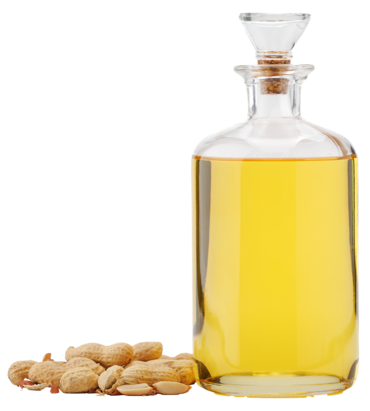
Background / history
The wild form of peanuts, which was already domesticated in the Andes of Colombia around 3000-2000 BC, probably originates from Brazil and was first described in 1547 by the Spanish Oviedo. In the 16th century it reached Africa with the slave trade. It was then exported to India, the Philippines and China. Only in the 19th century the peanut gained importance in Europe. Its original home is South America. The Incas living there gave their dead people peanuts to their graves, probably so that they had something to eat in the afterlife. The natives gave the peanut the name "tlacacáhuatl" (Nahuatl means "cocoa bean of the earth"). This is still the origin of the French and Spanish names for peanuts, cacahuète and cacahuete.
25,000
kg
Tank truck
900
kg
IBC
190
kg
Drum
27
kg
Canister
General durability: canister 12 months, drum 18 months, IBC 6 months
Nutritional values & composition
| Nutritional value | (per 100g) |
| Energy | 3,700 kJ / 900 kcal |
| Fat | 100 g |
| Saturated fatty acids | 19 g |
| Monounsaturated fatty acids | 61 g |
| Polyunsaturated fatty acids | 20 g |
Fatty acids ratio
Composition
| C16:0 Palmitic acid | 5 – 14 % |
| C18:1 Oleic acid | 35 – 76 % |
| C18:2 Linoleic acid | 8 – 43 % |
You want to buy Peanut oil?
Request now free of charge and without obligation from Gustav Heess. We deliver Peanut oil ...
- worldwide
- fast
- reliable
We offer Peanut oil in the following packaging units:
-
25,000
kg
Tank truck -
900
kg
IBC -
190
kg
Drum -
27
kg
Canister
